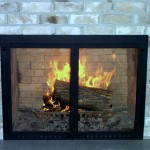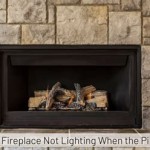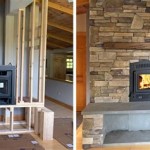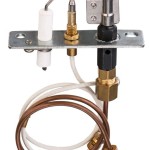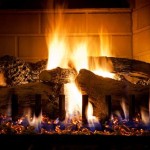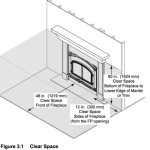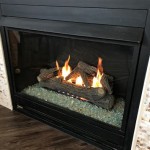Fireplace Crystals Change Color: Exploring the Science and Artistry
Fireplace crystals, also known as fire glass or fire diamonds, have become a popular alternative to traditional wood or gas logs in fireplaces and fire pits. Their appeal lies not only in their modern aesthetic but also in their ability to create a mesmerizing display of light and color. While many appreciate the visual beauty of these crystals, understanding the principles behind their color transformation enhances appreciation for their functionality and artistry.
These crystals are typically made from tempered glass, a type of glass that has been processed by controlled thermal or chemical treatments to increase its strength compared with normal glass. This tempering process is crucial because it allows the crystals to withstand the high temperatures generated within a fireplace or fire pit without shattering or degrading. The glass used is also carefully selected for its clarity and refractive index, properties that significantly influence how light interacts with the material and contributes to the vibrant colors observed.
The color change observed in fireplace crystals is not a chemical reaction or inherent property of the glass itself changing its atomic structure. Instead, it is a result of several optical phenomena working in concert. These phenomena include the combustion process, the addition of specific metal salts or coatings to the glass, and the angles at which the crystals are viewed. The interplay of these factors creates the dynamic, ever-shifting palette of colors that makes fire glass so captivating.
The Role of Combustion in Color Generation
The primary source of color in a fire feature is the combustion process itself. The burning fuel, whether it be natural gas or propane, produces a flame that emits light across the entire visible spectrum. However, the precise color of the flame is influenced by the temperature and the completeness of the combustion. A hotter, more efficient burn tends to produce a bluer flame, while a cooler or less efficient burn yields a more orange or yellow flame. These variations in flame color directly affect the appearance of the fire glass.
When the light from the flame passes through the glass crystals, the color perceived by the observer is a combination of the flame's inherent color and any additional coloration imparted by the glass itself. Therefore, the initial color of the flame acts as a backdrop, influencing the overall color palette of the display. For example, a blue flame will tend to make the crystals appear cooler in tone, while an orange flame will warm the color scheme.
Furthermore, the movement and flickering of the flame create a dynamic interplay of light and shadow within the glass crystals. This constant fluctuation contributes to the perception of shifting colors, as different portions of the crystals are illuminated at different times and with varying intensities of light. This effect is particularly pronounced in larger installations where the flames dance around and through the glass, creating a constantly evolving visual spectacle.
Metal Salts and Coatings: Enhancing the Color Spectrum
To further enhance the color possibilities of fireplace crystals, manufacturers often incorporate metal salts or apply specialized coatings to the glass. These additives are carefully chosen to introduce specific colors into the light that passes through the crystals. The process typically involves adding small amounts of metal compounds, such as cobalt (for blue), copper (for green), or manganese (for purple), to the molten glass during the manufacturing process. These metal ions become integrated into the glass structure and selectively absorb or transmit certain wavelengths of light, resulting in the desired color.
The precise concentration of metal salts used is critical, as even small variations can significantly alter the final color of the glass. Skilled artisans carefully control the mixing and melting processes to ensure consistent color throughout the batch. In some cases, different metal salts may be combined to create unique and complex color blends, expanding the range of available options. For instance, combining cobalt and manganese can produce a range of violet or lavender hues, while mixing copper and iron can result in shades of brown or amber.
In addition to metal salts, thin-film coatings can also be applied to the surface of the glass crystals to modify their optical properties. These coatings, often made from metal oxides, are applied using techniques such as sputtering or chemical vapor deposition. The thickness and composition of the coating determine which wavelengths of light are reflected or transmitted, allowing for precise control over the color and reflectivity of the glass. These coatings can create iridescent or dichroic effects, where the color of the crystal appears to change depending on the angle of observation. This adds another layer of complexity and visual interest to the fire glass display.
Angle of Observation and the Perception of Color
The angle at which the fireplace crystals are viewed also plays a significant role in how their color is perceived. This is due to a combination of factors, including the way light reflects and refracts within the glass, the scattering of light by surface imperfections, and the way the human eye interprets color.
When light enters a piece of fire glass, it bends or refracts due to the difference in refractive index between the air and the glass. The amount of bending depends on the angle of incidence and the wavelength of the light. This means that different colors of light will be bent by slightly different amounts, causing them to travel along different paths within the glass. As a result, the color of the light that emerges from the glass will vary depending on the viewing angle.
Furthermore, the surfaces of the glass crystals are not perfectly smooth. Microscopic imperfections and irregularities scatter the light as it passes through, further complicating the path of the light rays. This scattering effect is more pronounced at certain angles, leading to variations in brightness and color intensity. For example, a crystal viewed directly from above may appear brighter and more saturated in color than one viewed at a glancing angle.
Finally, the human visual system is not equally sensitive to all colors. Our eyes are most sensitive to green and yellow light, and less sensitive to blue and red light. This means that the perceived brightness and saturation of a color can change depending on the viewing angle. Furthermore, the surrounding environment and the colors of nearby objects can also influence how we perceive the color of the fire glass. For example, a red brick fireplace surround may enhance the perception of red tones in the glass, while a blue tiled surround may emphasize the blue hues.
In summary, the color changes observed in fireplace crystals are the result of a complex interplay of combustion, chemical additives, and the angle of observation. Understanding these principles allows for a deeper appreciation of the artistry and science that goes into creating these mesmerizing displays of light and color. The selection of materials, the control of combustion, and the design of the fire feature all contribute to the final visual effect, making fire glass a unique and captivating addition to any modern living space.

1 Color Changing Electric Fireplace Puraflame Review

Magnolia Mamas Fun Fire Pit Activity Color Changing Flames

Clear Fireplace Crystals Touchstone Home S Inc

How To Make Colored Fire At Home

How To Make Colored Fire At Home

Color Changing Gemstones 21 Crystals That Change

Funky Colored Flames Color Changing Flame Crystals 3 Pack Academy

Why Did My Crystal Change Colour Shape Inclusion Ethan Lazzerini

Color Changing Gemstones Chart Gemstone Colors Crystals And

Giantex 68 Inches Ultra Thin Electric Fireplace Recessed Wall Mounted Heater W Log Decorative Crystals Overheat Protection 750w 1500w Com
Related Posts

